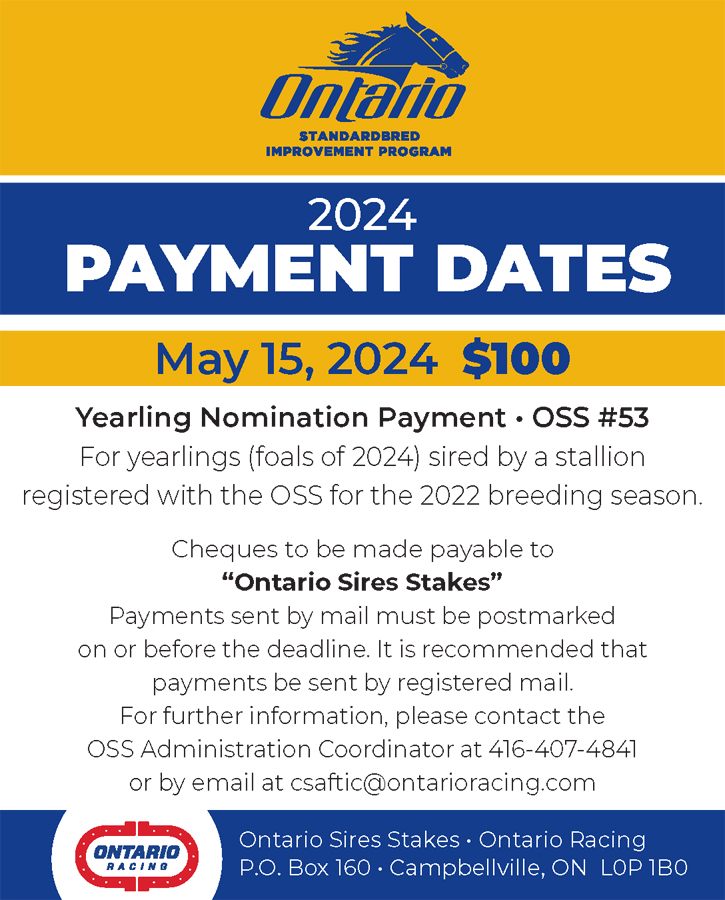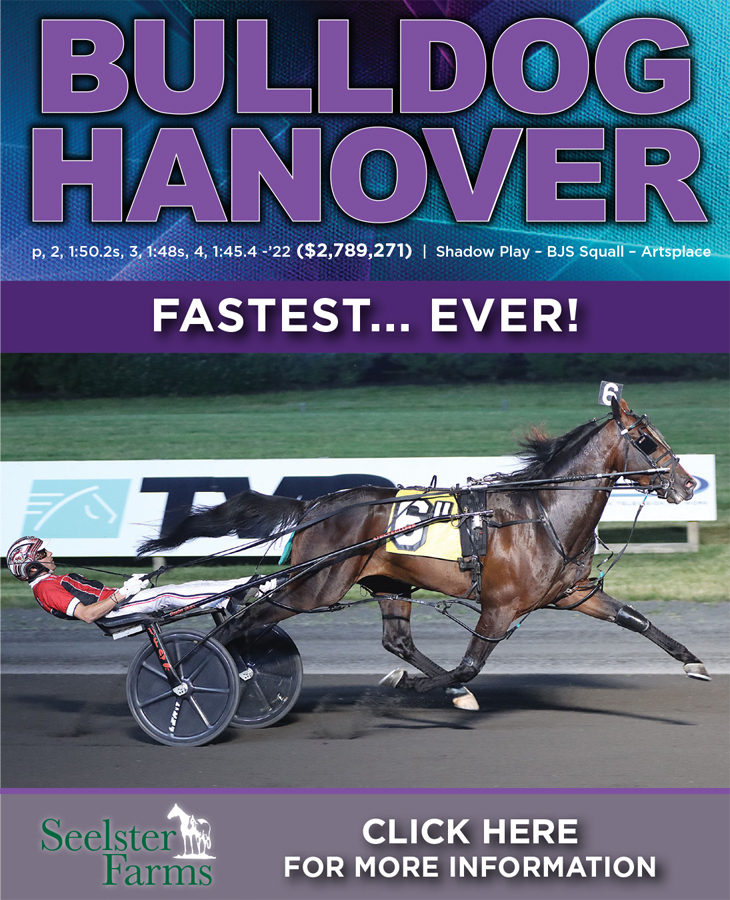

Bulldog Hanover, et al.
by Alan Leavitt
During my early years in the business, there were quite a number of private racing stables that operated with their own trainers. The one with the greatest longevity was Arden Homestead, one of whose namesakes, Ebby Gerry, was an original signer of the Declaration of Independence.
Arden Homestead was owned by the Gerry Family and the Harrimans, who had married into it. If my memory serves, it was Roland Harriman who saved the USTA (United States Trotting Association), and the Register, during the dark days of the Depression by personally supplying the money necessary to keep the USTA and its invaluable breeding records alive and current.
Parenthetically, the term “gerrymandering” derives from the time a latter day Ebby Gerry was the governor of Massachusetts, and he cut it up into very favorable election districts. The term is still in use today.
The name is lost to me, but if my recollection is right, a newcomer to the Gerry family took an interest in harness racing, and in 1943 bought his first horse, a yearling named Titan Hanover. The price was $3,000, a fortune in those days, and Titan Hanover won everything at 2 and 3, including the Hambletonian. He also became the first 2:00 2-year-old trotter.
He went to stud at the Hanover Shoe Farms, but he was not particularly successful. However, he did sire a Hambletonian winner in Hickory Smoke, who also stood at Hanover, but with no great success.
And now, sharing the belief that variety is the spice of life, let’s take a close look at the fastest horse of all time, the pacer Bulldog Hanover.
Before I get into his pedigree, though, I do want to note that in person Bulldog Hanover is a wonderfully friendly, fun-loving horse who loves to play with anyone giving him attention. This despite the fact that he’s already stood a full season in stud, which usually brings out a horse’s more aggressive side.
Bulldog Hanover is by Shadow Play by The Panderosa, and out of B.J.’s Squall, by Artsplace, second dam Lady Ashlee Ann, by Camtastic.
When you examine his extended pedigree, there is no double cross in his first four generations. That means, in translation, that Bulldog Hanover is a total outcross.
So, if you’re a breeder, that means you want to give Bulldog back some of his own blood, i.e., a 3 by 3 or even a 2 by 3 cross. Either of these two crosses represents inbreeding; but that’s the way to create synergy, or 2 plus 2 equals 7.
Jack Darling picked Bulldog Hanover as a yearling, and has been his trainer from the first time he wore a bridle. Darling has just been elected to the Canadian Hall of Fame, and he certainly belongs there. It also happens that Darling is a tall guy, which brings back a memory from my long-ago days at the horse shows.
Two of the top trainers of that day were Tom Moore, who was well over six feet, and Garland Bradshaw, who was maybe 5’5” on his tip toes.
One year, they were both showing weanlings at the Kentucky State Fair, and being a futurity class, the prize money started at close to $1,000, significant at the time.
The judge had Moore and Bradshaw’s weanlings lined up side by side, and he was going back and forth deciding on who would be the winner. At one point, when the judge was within earshot, Bradshaw said, out of the corner of his mouth, “That long, tall boy don’t need the money, judge, but I sure do.”
The judge tried to hide his smile a few minutes later as he tied Bradshaw’s weanling with the blue ribbon.
And for me, there have been many times when I’ve said to an invisible judge, “Those long, tall boys don’t need the money, judge, but I sure do.”
CORRECTION
In last week’s column, I wrote that Carl Allen invented trotting hopples. Several astute readers wrote in to point out that while Allen may have popularized trotting hopples, he didn’t invent them. The modern version of trotting hopples that we know today were invented by Australian Ken Shand in the early 1980s.
Mea culpa.














